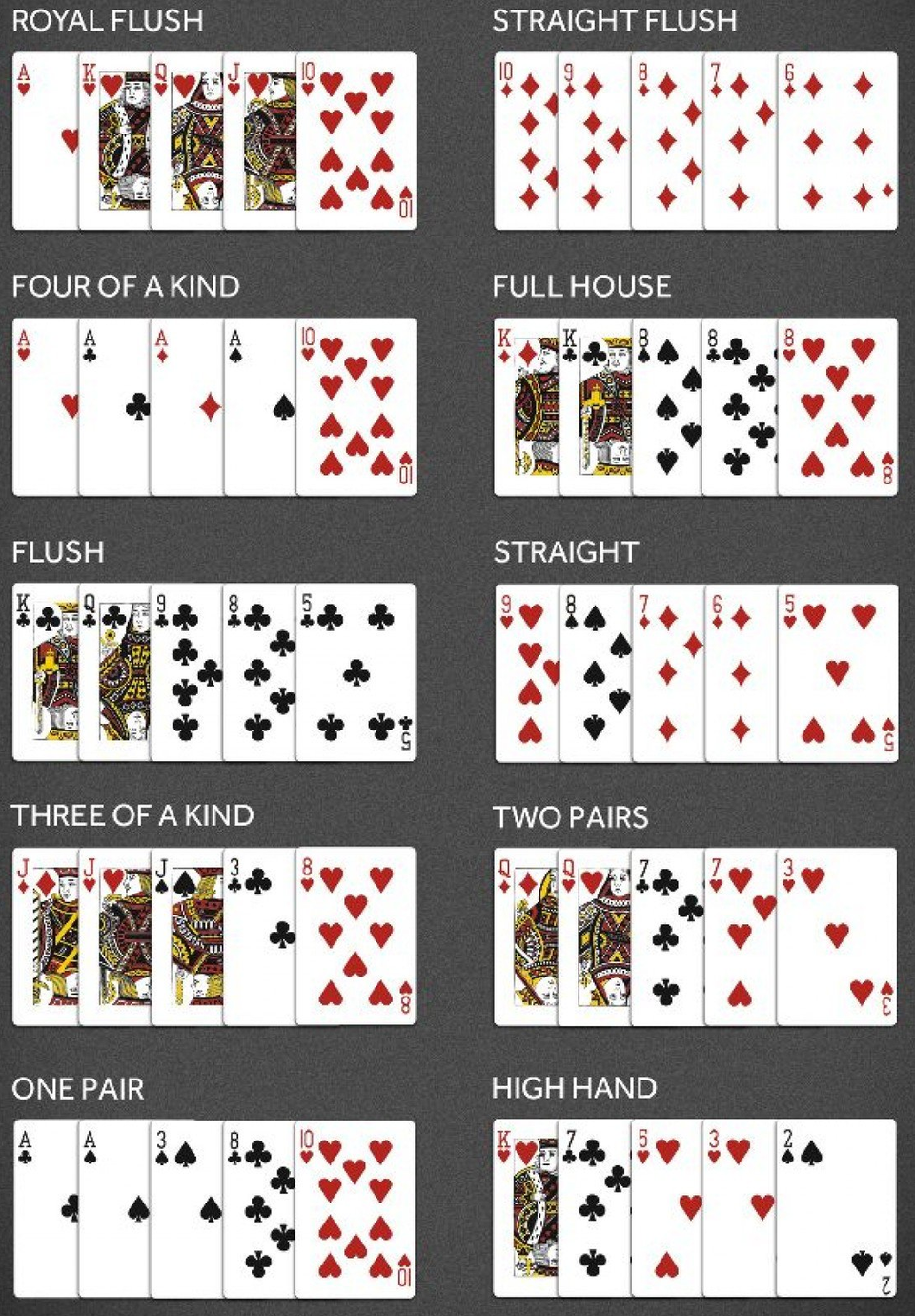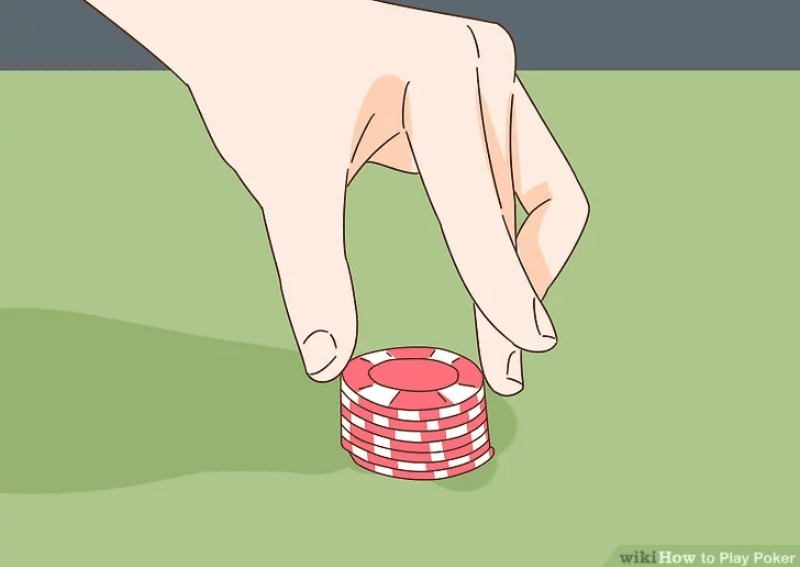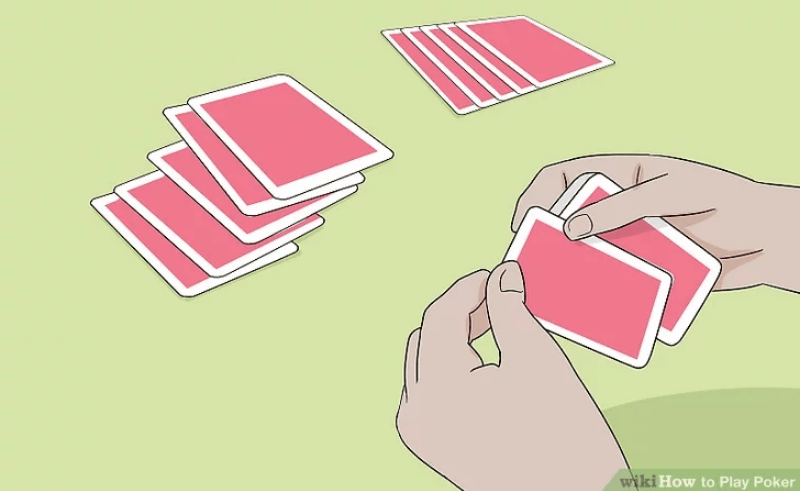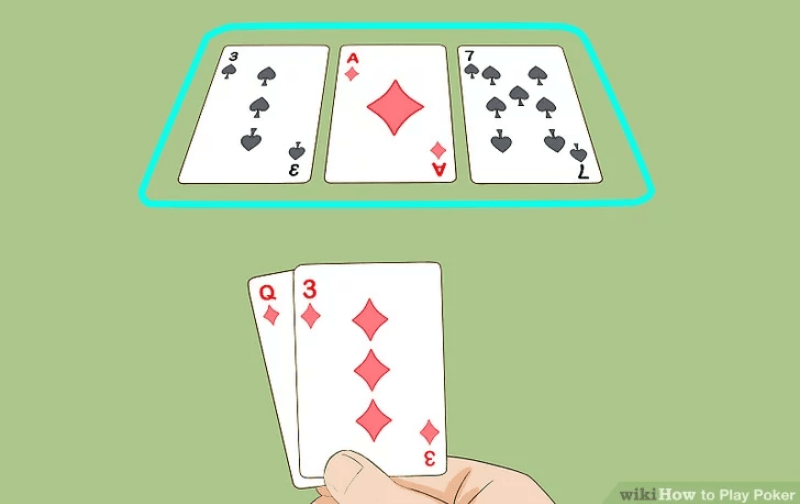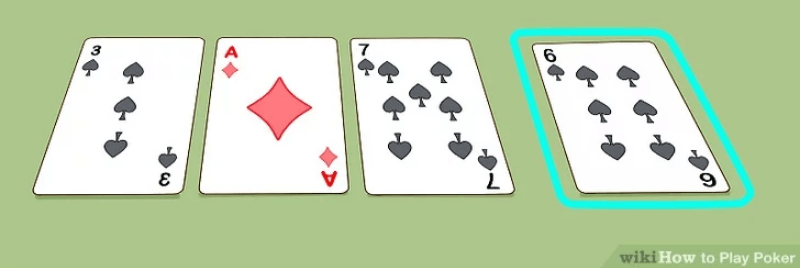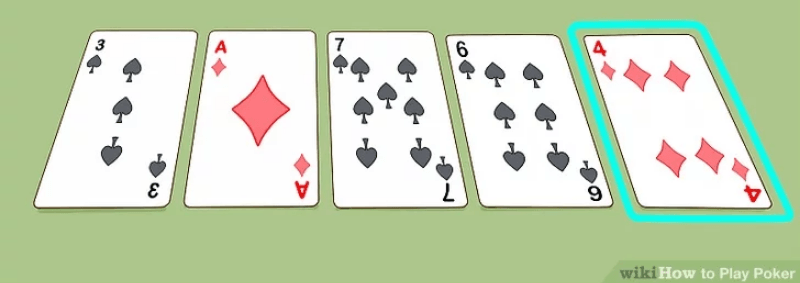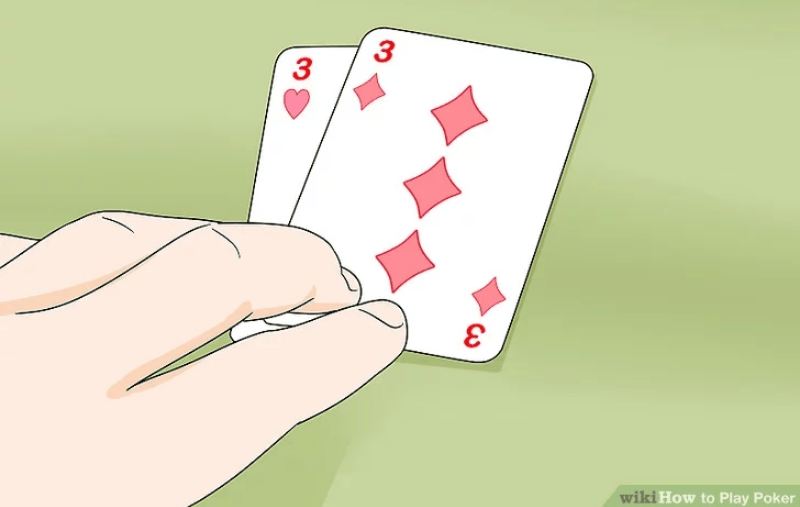POKER INFORMATION


- The highest-ranking hand is a royal flush (the royal straight flush). This hand includes a 10, Jack, Queen, King, and Ace of the same suit, one kind (all clubs, diamonds, hearts or spades). It can only be tied but not beaten by the royal flush of another suit.
- A straight flush is made up of 5 consecutive cards of the same suit.
- 4 of a kind means you have 4 cards of the same rank (but different suits, of course) and a fifth card of any rank (such as 4 aces and a 9). If you have 4 aces, then no one can have any hand with an ace, so that no royal flush is available.
- A full house contains 3 matching cards of 1 rank and 2 matching cards of another rank.
- A flush contains any 5 cards of the same suit. These skip around in rank or sequence, but are from the same suit.
- A straight contains 5 cards of consecutive rank but from more than one suit.
- 3 of a kind means you have 3 cards of the same rank, plus two unmatched cards.
- 2 pair is made up of two cards of one rank, plus two cards of another rank (different from the first pair), plus one unmatched card.
- Pair means you have 2 cards of the same rank, plus 3 other unmatched cards.
- High card is the lowest-ranking (called a "nothing") hand, when no two cards have the same rank, the five cards are not consecutive, and they are not all from the same suit.
- Aside from Texas Hold’em, most poker variants use an “ante up” system.
- In poker, the dealer will burn a card every round of dealing. That way, it’s harder for players to anticipate what card is coming up and the game becomes more of a gamble.
- The dealer will always pass out the cards in a clockwise direction, starting on the left.
- Place an initial bet if no one else has yet.
- Say "check" to avoid betting.
- Say "call" to match the bet someone else has made.
- Say "raise" to add more money to the betting pool. If you "raise," the other players will go around in a circle and choose to either "call" your new bet or fold.
- Say "fold" if someone else has bet and you don't want to match their bet. If you fold, turn your cards into the dealer face-down to avoid giving the other players any advantages!
- In total, the dealer will reveal 5 cards. You will have 7 cards total to use to create your best hand of 5: your two personal cards in your hands, and the five community cards on the table. While your luck can turn later on in a game, take some time to analyze the table after the "flop" – are you well positioned to end the game with a good hand?
- Depending on the rules where you’re playing, you can also draw replacement cards for the cards in your hand, if you like. This is usually done during or just after the betting round.
- Your game may also allow a card exchange at this point, but this isn’t typical in professional games.
- As you look at the cards, think about the possible hands other players might have. For instance, if all 4 cards on the table are spades, then any player who has a spade in their hand will have a flush, which means they have 5 cards from the same house.
- Similarly, if the cards on the table are 5,6,7, and 8, then anyone with a 4 or 9 will have a straight.
- If you have nothing good in your hand but the cards on the table make for an easy winning hand, then you may want to fold, as it’s likely another player has a winning card.
- If the rules allow it, you may be able to exchange your hand 1 final time before or after betting. However, this isn’t common in professional games.
- If there is a tie, the tied players split the pot.
- If you fold your hand, then you don’t have to show your cards.
- In Texas Hold’em, there are 5 cards on the table and 2 cards in your hand. You can create any 5-card combination using these 7 cards. The remaining cards aren’t counted.
- If you want to play the cards on the table only, this is called “playing the board.” However, it’s an option that everyone has, so it may not be the best strategy.
- The highest-ranking hand is a royal flush (the royal straight flush). This hand includes a 10, Jack, Queen, King, and Ace of the same suit, one kind (all clubs, diamonds, hearts or spades). It can only be tied but not beaten by the royal flush of another suit.
- A straight flush is made up of 5 consecutive cards of the same suit.
- 4 of a kind means you have 4 cards of the same rank (but different suits, of course) and a fifth card of any rank (such as 4 aces and a 9). If you have 4 aces, then no one can have any hand with an ace, so that no royal flush is available.
- A full house contains 3 matching cards of 1 rank and 2 matching cards of another rank.
- A flush contains any 5 cards of the same suit. These skip around in rank or sequence, but are from the same suit.
- A straight contains 5 cards of consecutive rank but from more than one suit.
- 3 of a kind means you have 3 cards of the same rank, plus two unmatched cards.
- 2 pair is made up of two cards of one rank, plus two cards of another rank (different from the first pair), plus one unmatched card.
- Pair means you have 2 cards of the same rank, plus 3 other unmatched cards.
- High card is the lowest-ranking (called a "nothing") hand, when no two cards have the same rank, the five cards are not consecutive, and they are not all from the same suit.
- Aside from Texas Hold’em, most poker variants use an “ante up” system.
- In poker, the dealer will burn a card every round of dealing. That way, it’s harder for players to anticipate what card is coming up and the game becomes more of a gamble.
- The dealer will always pass out the cards in a clockwise direction, starting on the left.
- Place an initial bet if no one else has yet.
- Say "check" to avoid betting.
- Say "call" to match the bet someone else has made.
- Say "raise" to add more money to the betting pool. If you "raise," the other players will go around in a circle and choose to either "call" your new bet or fold.
- Say "fold" if someone else has bet and you don't want to match their bet. If you fold, turn your cards into the dealer face-down to avoid giving the other players any advantages!
- In total, the dealer will reveal 5 cards. You will have 7 cards total to use to create your best hand of 5: your two personal cards in your hands, and the five community cards on the table. While your luck can turn later on in a game, take some time to analyze the table after the "flop" – are you well positioned to end the game with a good hand?
- Depending on the rules where you’re playing, you can also draw replacement cards for the cards in your hand, if you like. This is usually done during or just after the betting round.
- Your game may also allow a card exchange at this point, but this isn’t typical in professional games.
- As you look at the cards, think about the possible hands other players might have. For instance, if all 4 cards on the table are spades, then any player who has a spade in their hand will have a flush, which means they have 5 cards from the same house.
- Similarly, if the cards on the table are 5,6,7, and 8, then anyone with a 4 or 9 will have a straight.
- If you have nothing good in your hand but the cards on the table make for an easy winning hand, then you may want to fold, as it’s likely another player has a winning card.
- If the rules allow it, you may be able to exchange your hand 1 final time before or after betting. However, this isn’t common in professional games.
- If there is a tie, the tied players split the pot.
- If you fold your hand, then you don’t have to show your cards.
- In Texas Hold’em, there are 5 cards on the table and 2 cards in your hand. You can create any 5-card combination using these 7 cards. The remaining cards aren’t counted.
- If you want to play the cards on the table only, this is called “playing the board.” However, it’s an option that everyone has, so it may not be the best strategy.
How to Play Poker
Poker is a popular game that's easy to learn but difficult to master. Although it's a card game, poker is also a game of strategy, and you'll need to constantly read the other players to decide when to fold, when to bluff, and when to call...
How to Play Poker | Easy-to-Follow Tips for How to Play Poker
No-Limit Hold'em uses a standard 52-card deck even when played online. It can be played by anywhere from 2-10 players at a single table. If you have enough tables and space you can actually play with thousands of players at one time in a poker tournament format.
Basics of Poker - Card Game Rules
As early as the sixteenth century, Germans played a bluffing game called "Pochen." It later developed into a French version, called "Poque," which was eventually brought over to New Orleans and played on the riverboats that plied the Mississippi. In the 1830s, the game was refined further and became known as Poker.

